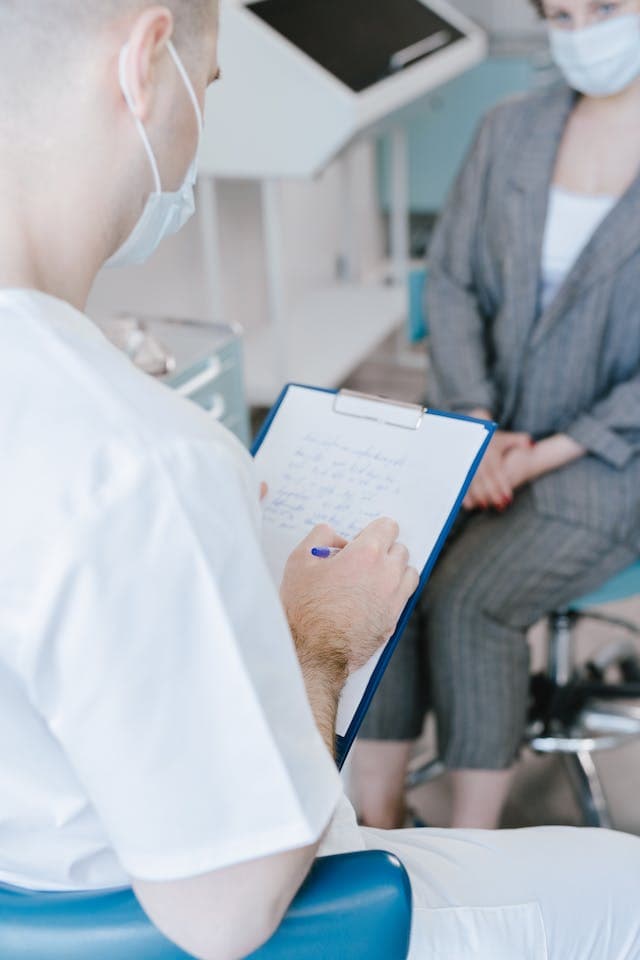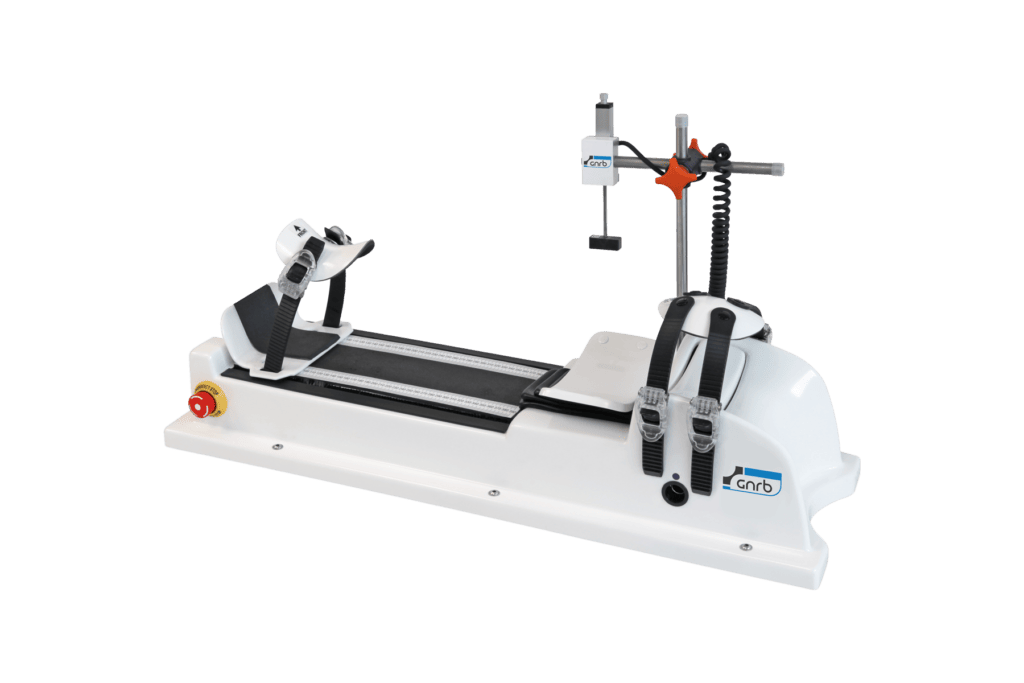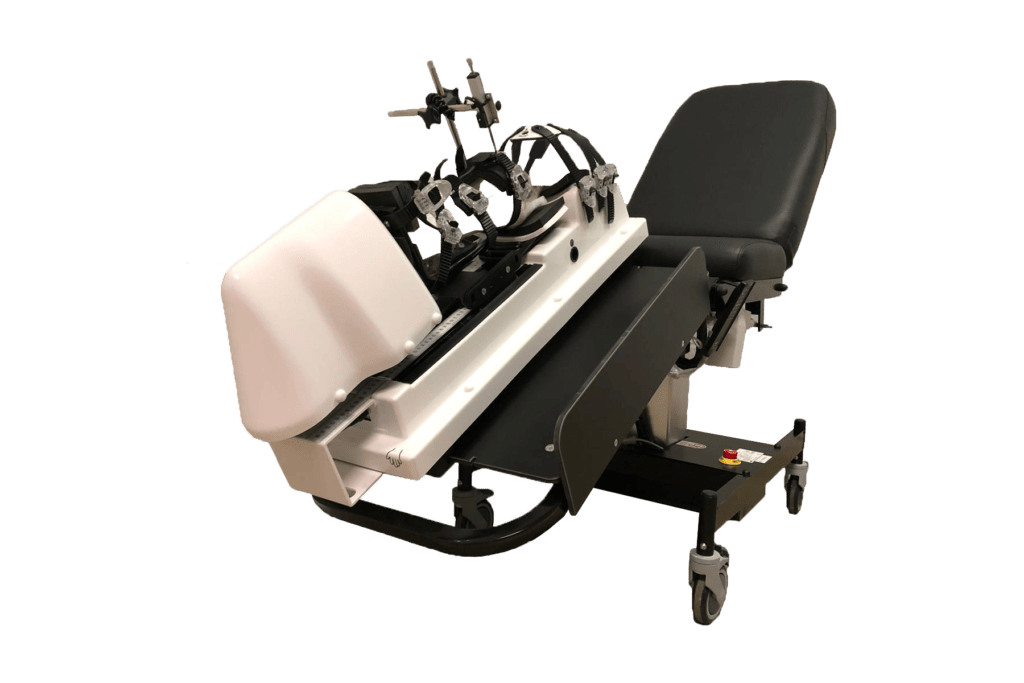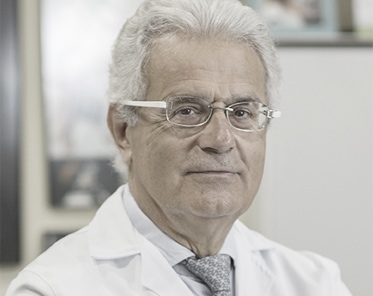Arthrometer Rehabilitation Tech: Enhancing Physical Therapy Outcomes with GNRB and Dyneelax
Learn about the GNRB and Dyneelax arthrometers enhancing physical therapy with accurate knee laxity measurements. See how they aid in developing focused rehab programs, track healing progress, and improve patient education for better recovery. Discover the role these arthrometer rehabilitation tech devices play in formulating customized treatments and their impact on patient success in physical therapy settings.
Introduction
Physical therapy is a critical component in the continuum of care for patients recovering from injuries or managing chronic conditions. It plays a pivotal role in facilitating recovery, improving mobility, and enhancing quality of life. Through individualized treatment plans, physical therapists guide patients on the path to restoring function, building strength, and preventing further injury.
At the heart of physical therapy is the commitment to personalized care. Each patient presents a unique set of challenges and goals, and physical therapists are trained to address these with targeted interventions. This approach is especially vital in cases of anterior cruciate ligament (ACL) injuries—a common and often debilitating sports-related injury.
Effective rehabilitation from an ACL injury requires not just time and effort, but also precision in treatment. Accurate assessment tools are indispensable to this process, providing therapists with the detailed information needed to design and implement effective rehabilitation strategies.
Enter the GNRB and Dyneelax arthrometers—advanced devices specifically designed to assess knee stability and ligament integrity with an unprecedented level of accuracy. In the hands of skilled physical therapists, these tools become integral in measuring progress, tailoring therapeutic exercises, and ensuring that recovery milestones are met safely and effectively.
The integration of these arthrometers into physical therapy programs epitomizes the evolution of patient care. By enabling precise monitoring and adjustment of treatment plans, they support a more dynamic and responsive rehabilitation process, ultimately leading to better outcomes and a faster return to daily activities and sports for patients.




Overview of the GNRB and Dyneelax: Arthrometer Rehabilitation Tech
Real-Time Feedback for Real Results
Both the GNRB and Dyneelax provide immediate results, which is a game-changer in physical therapy settings. This real-time feedback allows therapists to make on-the-spot adjustments to exercise regimens, ensuring that each session is optimized for the patient’s current state of recovery. As patients work to regain strength and mobility, the arthrometers serve as a tangible measure of their improvement, often boosting motivation and adherence to the rehabilitation program.
Tailoring Patient Care
In physical therapy, there's no one-size-fits-all approach. The GNRB and Dyneelax arthrometers are powerful allies in personalizing care to each individual’s needs. They allow therapists to set precise, measurable goals and to chart the patient’s progress with accuracy, ensuring that every therapeutic exercise is aligned with the patient's stage of healing. The use of these arthrometers represents a commitment to the highest standard of patient care in the physical therapy department, providing therapists with the tools they need to guide patients through their recovery journey with confidence and clarity.

GNRB
The Automated Benchmark
The GNRB arthrometer is a motorized device that physical therapists use to objectively assess the anterior-posterior laxity of the knee. Its automated nature provides consistent force application, yielding reliable measurements that are crucial for tracking the progress of ACL rehabilitation. The GNRB’s precision is instrumental in developing rehabilitation programs that are as responsive as they are effective, allowing therapists to make data-driven decisions throughout the recovery process.

Dyneelax
A Leap in Laxity Assessment
The Dyneelax arthrometer builds upon the foundation of the GNRB by offering not only translational but also rotational stress testing, giving a comprehensive picture of knee stability. This two-fold approach is particularly valuable in physical therapy for its ability to detect subtle changes and improvements in knee function that can inform the direction and intensity of therapeutic interventions. With its enhanced accuracy, the Dyneelax stands out as a tool for fine-tuning rehabilitation and ensuring a complete return to pre-injury levels of activity.
services
Enhancing Rehabilitation Programs
Incorporating the GNRB and Dyneelax into rehabilitation programs thus enhances the effectiveness of physical therapy interventions, leading to more successful recoveries and a quicker return to normal activity for patients.
Targeted Recovery Strategies
Physical therapists can leverage the data from the GNRB and Dyneelax arthrometers to enhance rehabilitation programs with targeted strategies that are tailored to the specific needs of each patient. By understanding the exact degree of knee laxity, therapists can identify the types of exercises and the level of intensity required for effective rehabilitation, minimizing the risk of re-injury.
Progressive Rehabilitation
With the precise measurements provided by the GNRB and Dyneelax, rehabilitation programs can progress in a controlled and phased manner. This ensures that the patient is not advancing too quickly or too slowly, which is essential for optimal tissue healing and the restoration of function.
Dynamic Adjustments
As recovery evolves, the knee's response to treatment will change. The GNRB and Dyneelax allow for dynamic adjustments to the rehabilitation program. This ongoing tailoring is key to addressing the changing needs of the knee throughout the healing process, ensuring that each stage of recovery is supported by appropriate therapeutic interventions.
Objective Milestones
Setting objective milestones is a cornerstone of effective rehabilitation. The arthrometers provide clear metrics that define these milestones, such as improvements in stability and strength, giving patients and therapists concrete goals to aim for and achievements to celebrate.
Multidisciplinary Collaboration
The GNRB and Dyneelax facilitate collaboration between different healthcare professionals involved in patient care. By providing objective data, these tools help create a cohesive rehabilitation team, from surgeons to physical therapists, all working with the same precise information to support the patient's recovery journey.
Patient Empowerment
Finally, these arthrometers empower patients by making them active participants in their rehabilitation. Understanding the objective measures of their progress can be highly motivating, providing them with a clear sense of direction and the reassurance that their recovery is on track.
Interested in exploring a rehabilitation program utilizing knee motorized arthrometers?
Monitoring and Adjusting Treatment
Continuous Assessment for Customized Care
The GNRB and Dyneelax arthrometers enable physical therapists to regularly track knee stability, offering essential data to tailor and adjust treatment plans responsively as the patient progresses through rehabilitation.
Adaptable Treatment Plans
As recovery progresses, the ability to adapt the treatment plan is crucial. The GNRB and Dyneelax offer detailed insights into the mechanics of the knee, enabling therapists to modify exercises, intensity, and frequency of therapy sessions based on objective evidence of improvement or plateau.
Informed Clinical Decisions
The precise measurements from the arthrometers aid physical therapists in making informed clinical decisions. This could range from advancing to more challenging exercises, scaling back on certain activities if the knee is showing signs of stress, or deciding when to introduce new therapeutic modalities.
Preventing Setbacks
By monitoring the knee's response to treatment, the GNRB and Dyneelax help in preventing setbacks. They allow therapists to catch potential issues early, adjusting the rehabilitation approach proactively to avoid complications and ensure steady progress.
Enhancing Patient Communication
These arthrometers enhance communication between patients and therapists. By discussing objective data, therapists can better explain the reasoning behind each treatment adjustment, fostering a clearer understanding and stronger partnership in the recovery process.
Efficient Resource Utilization
Finally, regular monitoring with the GNRB and Dyneelax ensures efficient utilization of therapy resources. By directing efforts where they are most needed, therapists can optimize each session for maximum benefit, which is not only better for the patient but also for the healthcare system as a whole.
Patient Education and Engagement
Integrating patient education and engagement into the rehabilitation process, with the aid of the GNRB and Dyneelax, enhances the overall therapy experience, leading to better adherence to treatment plans and more successful recovery outcomes.
Understanding the Healing Process
Educating patients about their injury and the recovery process is a key component of successful rehabilitation. The GNRB and Dyneelax arthrometers serve as educational tools, helping patients visualize and understand the specific details of their knee condition. By seeing objective data on knee laxity, patients can better comprehend the importance of each step in their therapy program.
Encouraging Active Participation
When patients are informed about their progress through tangible metrics, they are more likely to engage actively in their rehabilitation. The feedback from the GNRB and Dyneelax gives patients a clear sense of how their efforts contribute to their recovery, fostering a more invested and proactive approach to their healing journey.
Setting Realistic Expectations
Physical therapists can use the data from these arthrometers to set realistic expectations for recovery times and outcomes. This helps manage patients' expectations, keeping them motivated and lessening the frustration that can come with perceived slow progress.
Promoting Self-Management
The use of the GNRB and Dyneelax arthrometers empowers patients with the knowledge to manage their condition more effectively. Understanding the mechanics of their injury and the goals of therapy allows patients to become partners in their care, taking an active role in practicing exercises and avoiding activities that may hinder recovery.
Building Trust Through Transparency
Providing patients with clear information about their progress helps build trust in the therapeutic relationship. As patients see the objective improvements measured by the arthrometers, their confidence in the treatment plan and their therapist increases, which is crucial for a positive rehabilitation experience.
Supporting Long-Term Health
Finally, educating patients about their knee health goes beyond immediate injury recovery; it's about instilling habits and awareness that support long-term joint health and function, potentially preventing future injuries.

DOI: 10.24966/ORP-2052/100035

DOI: 10.1016/j.knee.2023.03.017

DOI: 10.1016/j.medntd.2023.100254
Don’t just take our word for it
Testimonials
To all users and those interested in the GNRB devices designed and patented by the Genourob Company.
Over the last 4 years, we have been intensively working the new method of Automatic Dynamic Laximetry, LDA, with its device the GNRB.
In addition to providing a state analysis of the state of the Anterior Cruciate Ligament (ACL) GNRB Gives a functional analysis as well.
So With the GNRB it’s possible to have a Dynamic Analysis of the stiffness of the ACL pre-surgery and of the graft post-surgery. It is useful in post-op follow-up for the graft Ligamentization assessment, and therefore a good indicator of the stability of the Knee.
The device is effective, reliable and easy to use and assists to improve diagnosis and treatment of the ACL injuries.

The main interest of this tool (but not the only one) in public health is to allow primary care doctors, and especially emergency physicians, to categorize knee sprains urgently, thanks to a simple-to-use tool in just a few minutes. This classification from the first consultation into a severe sprain (with ACL rupture) or mild (without ACL rupture) allows, on one hand, to avoid unnecessary and costly additional examinations (MRI) in the case of mild sprains, and on the other hand, to immediately adapt treatment to the severity of the sprain, avoiding, for example, unnecessary prolonged immobilizations.

I the undersigned, Doctor Henri ROBERT, Knee ACL surgeon specialist, confirm that the GNRB, ROTAM & DYNEELAX arthrometers are very accurate, reliable and with the best reproducibility in the world.
The arrival of the DYNEELAX revolutionizes the possibilities of the practitioner to regularly analyse the rotational and translational stabilities of the cruciate ligaments in the knee, using a non-invasive test, before and after surgery or as a preventive measure, or after partial tears. Numerous additional applications include notably the analysis of meniscus lesions (medial or lateral) which can be highlighted thanks to the rotational tests, as well as the functional analysis of the strength of the injured tissues.
The rotational analysis is an essential breakthrough as it allows the identification of rotational instabilities which are very difficult to detect with known clinical physical tests (pivot shift test, the Dejour test, dial test...). The DYNEELAX is the result of more than fifteen years of research and development which has led to the most advanced device in this field of study on an international level.
It is essential for surgeons to know the results of rotatory tests in order to adapt ACL surgery and perform or not an extra-articular tenodesis.
As much as translational stability could be controlled manually or with small manual laximetry tools, rotation has no suitable tool to validate this (nor any reliable clinical test due to the absence of relaxation necessary to carry out these tests properly).

This is a letter detailing my/our experience with use of the Genourob Dyneelax laximeter device.
We are a high volume tertiary referral arthroplasty centre and sports medicine centre in Western Australia. We are closely associated with the Orthopaedic Research Foundation of Western Australia.
We have had an excellent experience with the use of our Dyneelax device for multiple research projects, including novel investigation of the sagittal stability of total knee replacements and revision total knee replacements. We also have numerous projects working towards examining the stability of anterior cruciate multi-ligament knee reconstructions.
Our experience working with the company has been excellent. We are literally located on the other side of the world; however, they have gone over and above to help us with training and our customer support. I cannot recommend them highly enough.
In terms of the device, it is an excellent research tool which enables us to establish quantified measurement of the sagittal and rotational stability of multiple different knee arthroplasty devices, a measurement that hereto forth was impossible. This is generating high level novel research of an international interest.

My name is Michael Rüscher, I work in the field of conservative and operative orthopaedics as an osteopath and physiotherapist! I am currently working intensively on my PHD dissertation in the field of biomechanics.
I discovered the device Dyneelax from the company Genourob in the course of my research about 1 year ago and the idea was born to write the dissertation with this laximetry on the knee joint. I have now taken over 100 measurements on operated and conservative cruciate ligaments and am thrilled with the measurement method. It is simple and very reliable to use.
In my daily work with my brother Dr. Rudolf Rüscher we evaluate the cruciate ligaments by means of MRI and immediate laximetry.
We have already had 3 patients with a described complete cruciate ligament rupture who then showed no clear instability in the laximetry measurement, i.e. less than 1.5 mm at 100 Micro Newton. So we are excited about this functional study of this laximetry.
The topic of my dissertation is "Comparative investigation of the biomechanics (laximetry by Genourob) of the knee joint with rupture of the anterior cruciate ligament after surgical and conservative treatment under consideration of economic efficiency".
I would therefore like to thank the Genourob company once again for this innovative examination device!

Your questions answered
Common questions
How do the GNRB and Dyneelax arthrometers aid in physical therapy?
The GNRB and Dyneelax provide precise measurements of knee laxity, which help physical therapists in creating customized rehabilitation programs, monitoring progress, and making informed adjustments to treatment based on the patient’s recovery.
Are these arthrometers used throughout the entire rehabilitation process?
Yes, they can be used during all phases of rehabilitation—from initial assessment to the final stages of recovery—to ensure that the treatment plan is effective and that the patient is on track for a safe return to activity.
Will using the GNRB and Dyneelax arthrometers make my recovery faster?
While recovery times can vary based on individual circumstances, the GNRB and Dyneelax can contribute to a more efficient rehabilitation process by providing accurate data to guide therapy and potentially prevent setbacks.
Is training with the GNRB and Dyneelax painful?
These arthrometers are designed to measure knee stability without causing pain. However, any discomfort during use should be communicated to the physical therapist, who can adjust the assessment as necessary.
Can I see my progress with these devices during my therapy sessions?
Absolutely. Physical therapists can share the results from the GNRB and Dyneelax with you, allowing you to see the improvements in your knee stability and track your progress over time.
Resources
To assist healthcare professionals in leveraging the GNRB & DyneeLax arthrometers to their fullest potential, we have curated a collection of resources. These are designed to provide comprehensive insights, from basic setup and operation to in-depth diagnostic procedures. These resources aim to facilitate seamless integration of these innovative tools into your diagnostic practice, ensuring accurate and timely identification of knee ligament injuries.
Research Articles & Clinical Studies:
2023 - GNRB® laximeter with magnetic resonance imaging in clinical practice for complete and partial anterior cruciate ligament tears detection: A prospective diagnostic study with arthroscopic validation on 214 patients.
DOI: 10.1016/j.knee.2023.03.017
2023 - Sensitivity, repeatability and reproducibility study with a leg prototype of a recently developed knee arthrometer: The DYNEELAX®
DOI: 10.1016/j.medntd.2023.100254
2019 - Anterior knee translation measurements after ACL reconstruction are influenced by the type of laximeter used.
DOI: 10.1007/s00167-020-05950-5
Instructional & Presentation Videos:
Click Here to view GNRB Tutorial Video
Click Here to view the DyneeLax Presentation Video
We are here to help!
We're here to assist you on your journey towards better health and precision in diagnosis. Don't hesitate to reach out with any questions or inquiries. Contact us today and let us guide you towards a healthier tomorrow.
Visit us
Bâtiment 60, Rue du Chef de Bataillon Henri Géret
53000 Laval
France
Email Us
yves.crystal@genourob.com
Call Us
+33 7 66 76 03 92 Whatsapp or Phone Call
